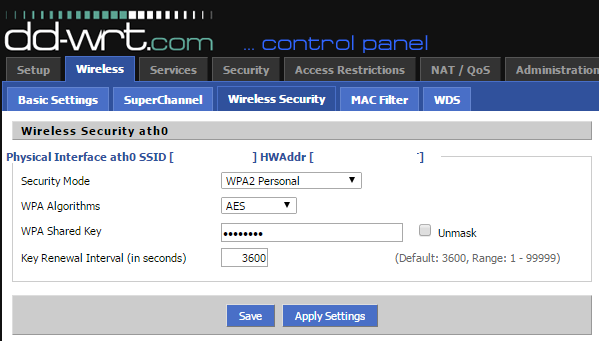
That’s it! Place your repeater on the other side of your house, but not so far that it doesn’t get a good signal. Click on it.įind you main router’s wireless SSID and click Join. To do that, go to Status > Wireless.Īt the bottom of the page, you’ll see a button that says Site Survey. Lastly, we need to make sure that your repeater is connected to your main router. This way, you can choose which access point to use, depending on where you are.Ĭlick on save, then go over to the Wireless Security page.Įnter the wireless security settings for your main router, then enter the details for your new repeater’s signal. Next, come up with a new SSID for your repeater. Plug in the SSID, configure the network mode, and decide if you wanted it to be bridged (connected with the old network) or unbridged (isolated from it). The physical interface is going to be receiving the signal from your main router. You’ll see two sections, Wireless Physical Interface (wl0), and Virtual Interfaces (wl0.1). Under Wireless > Basic Settings, change the mode to Repeater. We can put our spare device to work as a repeater, which can act as a range-extender for a new section of your house or yard. If you have your old one lying around, why not throw DD-WRT on it? I had a spare Linksys wireless access point, but after putting alternate firmware on it, I had a full-blown router on my hands. Most of us have upgraded our networks with new routers over the years. Turning this setting on should keep the two from interfering too badly with one another.
Dd wrt superchannel activation key Bluetooth#
If you use bluetooth a lot, then you may have noticed a drop in reliability or speed with both wireless and bluetooth devices. B-only devices won’t see any problems and N-based devices shouldn’t be negatively affected, either.įinally, we get to Bluetooth Coexistence Mode. Things may slow down if they don’t support it, though, so be sure to do your homework.
Dd wrt superchannel activation key plus#
If your wireless router and adapters support Afterburner – also known as SpeedBooster, SuperSpeed, Turbo G, and G Plus (but not Super-G) – you can enable this to get a boost. It’s been that way for a few weeks and I haven’t had a problem yet, but your mileage may vary. I don’t have to worry about that since my “server area” is cold and I’m also a bit reckless, so I kicked mine up to 150. Pushing it higher can cause excessive heat which can damage your router. Most people report that jumping up to a 100 is safe. The default is a safe value of 70, but we can kick it up a bit. This is the broadcasting power of your transmitting antenna. There are three settings of interest, the first being TX Power.


Fire up your web browser and direct it to your router’s configuration page.


 0 kommentar(er)
0 kommentar(er)
